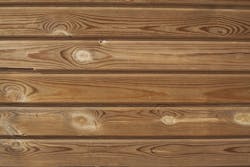AWC and ICC Release Mass Timber Buildings and the IBC
The American Wood Council (AWC) and International Code Council have released a joint publication, Mass Timber Buildings and the IBC, providing an overview of requirements for mass timber construction as found in the 2015, 2018, and 2021 International Building Code (IBC).
The document highlights changes beginning with the 2015 International Building Code, that allow for construction of mass timber buildings with larger heights and areas than was permitted for buildings of wood construction types (Types III, IV and V) prior to the 2015 IBC. The document reviews the 2015 IBC recognition of cross-laminated timber (CLT), the reorganization of heavy timber provisions in the 2018 IBC, followed by the significant changes in the 2021 IBC and International Fire Code (IFC) for tall mass timber construction.
In addition, the Code Council and AWC will co-present two full-day courses on Mass Timber Buildings and the IBC this fall. The course will highlight provisions in the 2015/2018 IBC for Mass Timber Construction as well as provide an overview of Tall Mass Timber Construction per the 2021 IBC and 2021 IFC.
“The ICC Tall Wood Building Ad Hoc Committee recommendations were based on rigorous fire and life safety equivalent performance and testing. As a result, the ICC membership’s approval of tall mass timber code provisions in the 2021 IBC permit mass timber to be used in lieu of traditional tall building materials,” said AWC Vice President of Codes & Regulations Kenneth Bland. “Given the anticipated demand across the country for taller mass timber buildings, this publication provides the building safety community with comprehensive explanations of the new regulations.”
“We are pleased to be collaborating with AWC on this effort to increase the knowledge of the important code changes established in the 2021 IBC,” said Code Council Executive Vice President Mark Johnson. “Building safety is more important than ever and this publication serves as an excellent resource for code officials to assist with the growing mass timber construction.”
The Mass Timber Buildings and the IBC publication is available for purchase through the Code Council store. You can sign up for the fall course through the Learning Center.
